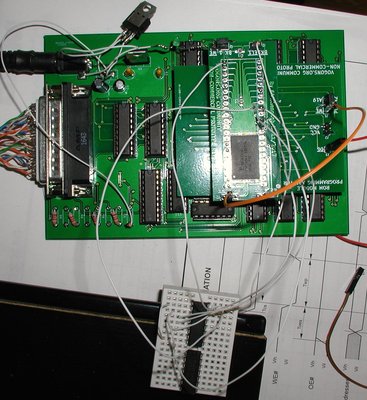Reply 1700 of 3172, by 640K!enough
The answer, for the moment, is that Mega-Em doesn't produce sound that would let me call it "working" with the current ROM. It produces random squeaks and noises that aren't too far from the feedback noises you might get from mishandling an amplified microphone. Applications with native InterWave support and IWSBOS appear to work as they should.
I'm not sure what allowed it to appear to work with the single 2 MiB bank, nor why it's failing now. I'll try different instrument sets and more different sizes when I have time, for curiosity's sake. I suspect that, upon detecting an InterWave board, it makes certain assumptions about its features and sets the registers accordingly. If there is a reasonable match, it "works"; if not, you're treated to noise. Discovering what it's doing and how we can change that or work within its limitations may prove to be a challenge.



